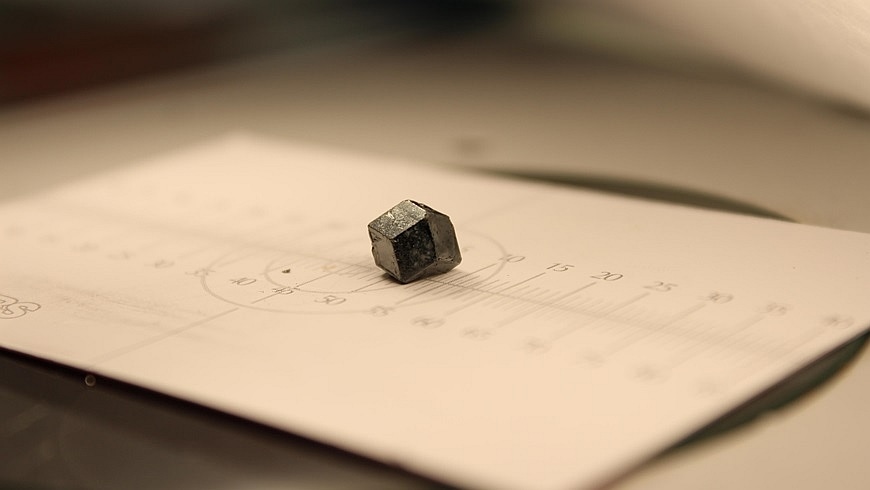Sep 22 2016
Single crystals that are made up of lead halide perovskites, and have the capacity to gage radioactive radiation with high accuracy have been developed by a group of researchers at ETH Zurich and Empa. Preliminary experiments prove that these crystals that can be manufactured from low-priced solvents or aqueous solutions function as efficiently as standard cadmium telluride semi-conductors that are considerably more complicated to manufacture. This discovery is expected to reduce the price of various radio-detectors, for instance the portable dosimeters in power stations, scanners in the security sector, and measuring devices in medical diagnostics.
 Credits: Empa Swiss Federal Laboratories for Materials Science and Technology
Credits: Empa Swiss Federal Laboratories for Materials Science and Technology
The radioactive decay of unstable isotopes is most of the times virtually accompanied by gamma photons. For identifying radioactive substances, gamma detectors that function at room temperature and that are highly sensitive and cost-effective are in great demand. However, it is easier said than done to find suitable substances, as Maksym V. Kovalenko, a professor at ETH Zurich and research group leader at Empa, explains that the established semiconductor should have an exceptional electronic quality. It should display high mobility and lifetime of carriers together with a low density of trap states and also of essential carriers at room temperature. Next, it must comprise heavy elements capable of absorbing highly energetic gamma photons. Lastly, it should also have the potential to grow huge single crystals of this material and these crystals need to be stable, both thermally and mechanically.
Classical Beaker Chemistry
Until now, only cadmium telluride (CdTe) has satisfied these expectations. However, the element used in manufacturing thin-film solar cells does not dissolve in water and it only melts at temperatures greater than 1,000°C, which complicates and makes the detector crystals production expensive. Kovalenko, along with his research team have successfully manufactured single crystals using another group of novel semiconductors (lead halide perovskites) using a normal glass beaker. This experiment was conducted at a cost of only a few Swiss Francs per crystal. As per the recent report, made by the researchers in the journal Nature Photonics, these crystals can be utilized for highly sensitive detectors for gamma radiation. One of the many applications of these crystals could be a mini Geiger counter, which can be linked to smartphones. This will help people to test their food for radioactivity in contaminated areas.
Applications in Neurodiagnostics
These new crystals can be of potential use in diagnosing metabolic problems in the brain. Dopamine receptor disorders can have a number of consequences such as hyperactivity (ADHD), social anxiety disorders, Parkinson’s, drug addiction, alcoholism and schizophrenia. To diagnose these disorders, patients are provided with radioactive tracer substances, which help in interpreting the brain activity in magnetic resonance imaging (MRI). Administering these radioactive substances has its own drawbacks. However, serious health complications develop when impure substances are administered. Hence, its purity has to be ensured quickly because these tracer substances have a low half-life, i.e. they degrade at a rapid pace.
To demonstrate the capabilities of lead halide perovskites, Kovalenko’s team made use of the new single crystal detector in order to examine the isotope purity of 18F-fallypride, which is a tracer substance utilized in clinical trials on dopamine receptors. 18F-fallypride is a radioactive substance and has a half-life of 110 minutes. This indicates that there is only limited time available between its production and injection to test its radioactive purity.
Until now, purity measurements are done in an elaborate dual-step process. The first step involves separation of the substance using high-performance liquid chromatography technique. The second involves the measurement of radioactivity using a detector. After the discovery of the new crystal, researchers have now successfully reduced the two-stage process to a single step. Just by placing the crystal in front of the tracer substance, readings can be recorded.